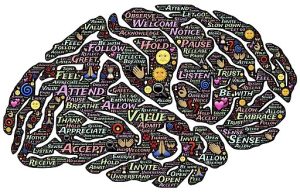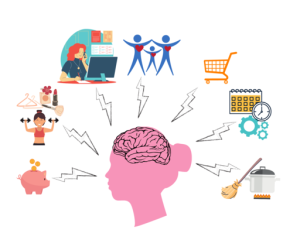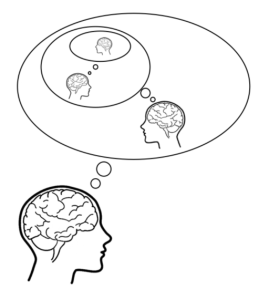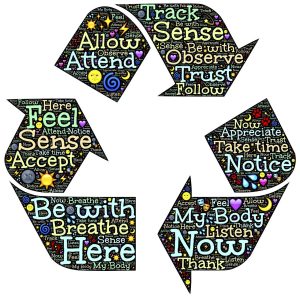1.5 Competent Communication
We have already defined communication, and you probably know that to be competent at something means you know what you’re doing. When we combine these terms, we get the following definition, which has remained reasonably consistent over time: competent communication refers to the knowledge of effective and appropriate communication and the ability to use and adapt that knowledge in various contexts (Cooley & Roach, 1984; Adler et al., 2021).
 |
Knowledge: The cognitive elements of competence include knowing how to do something and understanding why things are done the way they are (Hargie, 2011). People can develop cognitive competence by observing and evaluating the actions of others. Cognitive competence can also be developed through instruction. |
 |
Ability to use: Individual factors affect our ability to do anything. Not everyone has the same athletic, musical, or intellectual ability. At the individual level, a person’s physiological and psychological characteristics affect competence. In terms of physiology, age, maturity, and ability to communicate affect competence. In terms of psychology, a person’s mood, stress level, personality, and level of communication apprehension (level of anxiety regarding communication) affect competence (Cooley & Roach, 1984). All these factors will either help or hinder you when you try to apply the knowledge you have learned to actual communication behaviours. |
 |
Adapting to various contexts: Social and cultural contexts impact what is considered competent communication in one situation and incompetent communication in another. Competent communicators are able to adapt and apply their communication knowledge and skills across a variety of contexts. |
Communication competence is also said to be about a balance between two approaches: task effectiveness and relational appropriateness (Study Hall, 2022). We have previously discussed that communication is used to accomplish goals, so we want our communication approach to be such that it allows us to reach those goals effectively, in terms of the use of time and resources to accomplish the task. Thus, our communication approach would be task-effective. In contrast, a communication approach that focuses on relational appropriateness will consider relationships. This approach might consider the word choice, tone, and body language used in the context of the social environment and the individuals being spoken with. The purpose of using relational appropriateness as a communication approach is to protect or create a positive relationship. Our communication impacts people and outcomes, so it is important to consider which approach to take and when. Both approaches are valuable in their own right, and a balanced use of both is ideal, as described in the following video (Study Hall, 2022).
(Study Hall, 2022)
Despite the fact that no guidelines for or definitions of competence will be applicable in all situations, the National Communication Association (NCA) has identified many aspects of competence related to communication.
To help colleges and universities develop curriculum and instruction strategies to prepare students, the NCA has defined what students should be able to do in terms of speaking and listening competencies by the time they graduate from college. The NCA’s suggested speaking and listening competencies seem to focus on the task-effectiveness approach to communication (Morreale et al., 1998):
-
- State ideas clearly.
- Communicate ethically.
- Recognize when it is appropriate to communicate.
- Identify the communication goals.
- Select the most appropriate and effective medium for communicating.
- Demonstrate credibility.
- Identify and manage misunderstandings.
- Manage conflict.
- Be open-minded about another’s point of view.
- Listen attentively.
Communication competence is a dynamic and evolving process no matter how much knowledge, ability, and adaptability we possess at any one point in time because our environment is always changing, which leads to the need for us to change. We will continuously have competencies we are skilled in and areas where we can improve.
The development of communication competence occurs over time and through a series of four stages. Different communication competencies can be at different developmental stages, and the developmental stages can change as the situations requiring communication competencies evolve.
- Stage 1: Unconscious incompetence: Before you have built up a rich cognitive knowledge base of communication concepts and practised and reflected on skills in a particular area, you may exhibit unconscious incompetence, which means you are not even aware that you are communicating in an incompetent manner.
- Stage 2: Conscious incompetence: Once you learn more about communication and have a vocabulary for identifying concepts, you may find yourself exhibiting conscious incompetence. This is when you know what you should be doing, and you realize that you’re not doing it as well as you could.
- Stage 3: Conscious competence: As your skills increase, you may advance to conscious competence, meaning that you know you are communicating well in the moment, which will add to your bank of experiences to draw from in future interactions.
- Stage 4: Unconscious competence: When you reach the stage of unconscious competence, you communicate successfully without straining to be competent.
Again, just because you reach the stage of unconscious competence in one skill or with one person does not mean you will always stay there. We are faced with new communication encounters regularly, and though we may be able to draw on the communication skills we have learned about and developed, it may take a few instances of being in the conscious incompetence stage before you can advance to later stages.
One way to progress towards communication competence is to become a more mindful communicator. Mindful communication means the communicator actively and fluidly processes information, is sensitive to communication contexts and multiple perspectives, and is able to adapt to novel communication situations (Burgoon et al., 2002). Mindful communication can help us accomplish tasks and leans towards the relational appropriateness approach by helping us speak and listen in order to learn. Mindful communication involves processing information about the other person and about how we are feeling during the interaction. It allows us to form the truest meaning of the message as we form a deeper understanding of the other person and ourselves.

Various communication behaviours can signal that we are communicating mindfully. For example, asking a person to paraphrase their understanding of the instructions you just gave them shows that you are aware that verbal messages are not always clear, that people do not always listen actively, and that people often do not speak up when they are unsure of instructions for fear of appearing incompetent or embarrassing themselves. Some communication behaviours indicate that we are not communicating mindfully, such as withdrawing from a romantic partner or engaging in passive-aggressive behaviour during a period of interpersonal conflict. Most of us know that such behaviours lead to predictable and avoidable conflict cycles, yet we are all guilty of them.
The following video by Sanvello (2021) briefly discusses mindful communication, how to avoid communication autopilot, and how to speak and listen supportively.
(Sanvello, 2021)
Mindful communication can also help us develop competency in decoding important messages that would otherwise be missed. For example, our tendency to assume that people are telling us the truth can allow us to miss communication cues that might be more obvious if we were being mindful. Therefore, a certain amount of tentativeness and mindful monitoring of a person’s nonverbal and verbal communication can help us detect deception. However, this is not the same thing as chronic suspicion, which would not indicate communication competence.
Becoming a more mindful communicator has many benefits, including achieving communication goals, detecting deception, avoiding stereotypes, and reducing conflict. Whether or not we achieve our day-to-day communication goals depends on our communication competence.
On a daily basis, all of this will take place in the simplest communication scenario—a conversation. We all have conversations in both personal and professional settings. Communication competence during conversations can help build and maintain positive relationships, be key to accomplishing goals in our personal and professional lives, or serve to simply learn something that we can apply in many ways. In the following Tedx Talks (2015) presentation, Celeste Headlee, an award-winning interviewer, demonstrates how mindful communication works in an everyday conversation. Headlee proposes that there are 10 rules to having a good conversation—one where our speaking and listening skills allow the best task and relational outcomes.
(TEDx Talks, 2015)
Headlee shares the following 10 rules and gives further examples and context:
-
- Stop multitasking.
- Assume you have something to learn.
- Use open-ended questions.
- Go with the flow. Allow your own thoughts to enter, then let them go. Remain focused on the speaker’s messages.
- If you don’t know, say you don’t know.
- Don’t equate your experience with theirs. Let the moment be about them.
- Try not to repeat yourself. It’s boring and condescending.
- Don’t get bogged down in the details. Focus on learning about the person, and them learning about you.
- Listen. When we are speaking, we are not learning.
- Be brief—short enough to retain interest, long enough to cover the subject.
Headlee suggests that the key to conversational communication competence is remaining interested in others.
The following chapters will provide opportunities to gain knowledge, practise using that knowledge, and develop the ability to adapt our communication across a wide range of interpersonal interactions.
Relating Theory to Real Life
1. Consider a former teacher, guardian, coach, or boss that you considered good at communication.
a. What made them a good communicator?
b. If you could adopt just one of their communication skills, what would it be and why?
2. Right now, are you a competent communicator? Do you see examples of the four stages in your life? Explain your answer using examples.
3. Right now, do you feel you are a balanced communicator in terms of your use of task-effective or relationally appropriate approaches?
4. Right now, do you communicate mindfully? Explain your answer using examples.
5. What motivates you to become a competent communicator?
6. Create one to three personal goals that would move you towards communication competence.
Attribution
Unless otherwise indicated, material on this page has been reproduced or adapted from the following resource:
University of Minnesota. (2016). Communication in the real world: An introduction to communication studies. University of Minnesota Libraries Publishing. https://open.lib.umn.edu/communication, licensed under CC BY-NC-SA 4.0, except where otherwise noted.
References
Adler, R. B., Rolls, J. A., & Proctor II, R. F. (2021). LOOK: Looking out, looking in (4th ed.). Cengage Learning.
Bergoon, J. K., Berger, C. R., & Waldron, V. R. (2002). Mindfulness and interpersonal communication. Journal of Social Issues, 56(1), 105–127. https://doi.org/10.1111/0022-4537.00154
Cooley, R. E., & Roach, D. (1984). A conceptual framework. In R. Bostrom (Ed.), Competence in communication: A multidisciplinary approach (p. 25). Sage.
Hargie, O. (2011). Communicating effectively: The skills approach. In Skilled interpersonal communication: Research, theory and practice (pp. 1-12). Routledge.
Morreale, S., Rubin, R. B., & Jones, E. (Eds.). (1998). Speaking and listening competencies for college students. National Communication Association (NCA). https://www.natcom.org/sites/default/files/pages/Assessment_Resources_Speaking_and_Listening_Competencies_for_College_Students.pdf
Sanvello. (2021, April 30). Mindful communication [Video]. YouTube. https://youtu.be/wCRgiYN-bgQ
Study Hall. (2022, August 17). Working toward competent communication | Human communication | Study Hall [Video]. YouTube. https://youtu.be/KprF-zw2Qqw
TEDx Talks. (2015, May 7). How to have a good conversation | Celeste Headlee | TEDxCreativeCoast [Video]. YouTube. https://youtu.be/H6n3iNh4XLI
Image Credits (images are listed in order of appearance)
Brain-Mind-Presence by johnhain, Pixabay licence
Carga mental femenina by Daney0909, CC BY-SA 4.0
Decision making in a social context by Glascher Lab, CC BY-SA 4.0

